
What Parents Want Policymakers to Know
ABOUT INVESTMENT IN EARLY CHILD CARE
Published June 2025
A new national poll commissioned by Child Care Aware® of America and conducted by the bipartisan research team of New Bridge Strategy and Hart Research shows that parents are struggling to make child care work. Findings show that many parents are piecing together multiple care arrangements, facing challenges balancing work and caregiving, and struggling to pay for child care. As a result, an overwhelming majority of parents—across party lines and in all types of communities—say that expanding access to affordable, quality child care should be a high priority for both federal and state policymakers, and that funding for child care and early learning should be increased.
Download the full report: Families Demand Child Care Investment: What Parents Need Policymakers to Know
Finding 1: The Child Care Landscape is a Complex Patchwork
A majority of parents (58%) use some form of out-of-home care, often combining multiple arrangements to meet their needs. For some families, this complexity may reflect that one single child care arrangement is insufficient or isn’t currently available to them in a way that fully meets their needs.
When choosing child care arrangements, parents understand that the early years matter profoundly for their children’s brain development and future learning. Parents know that early experiences shape how children grow, think, and relate to the world.
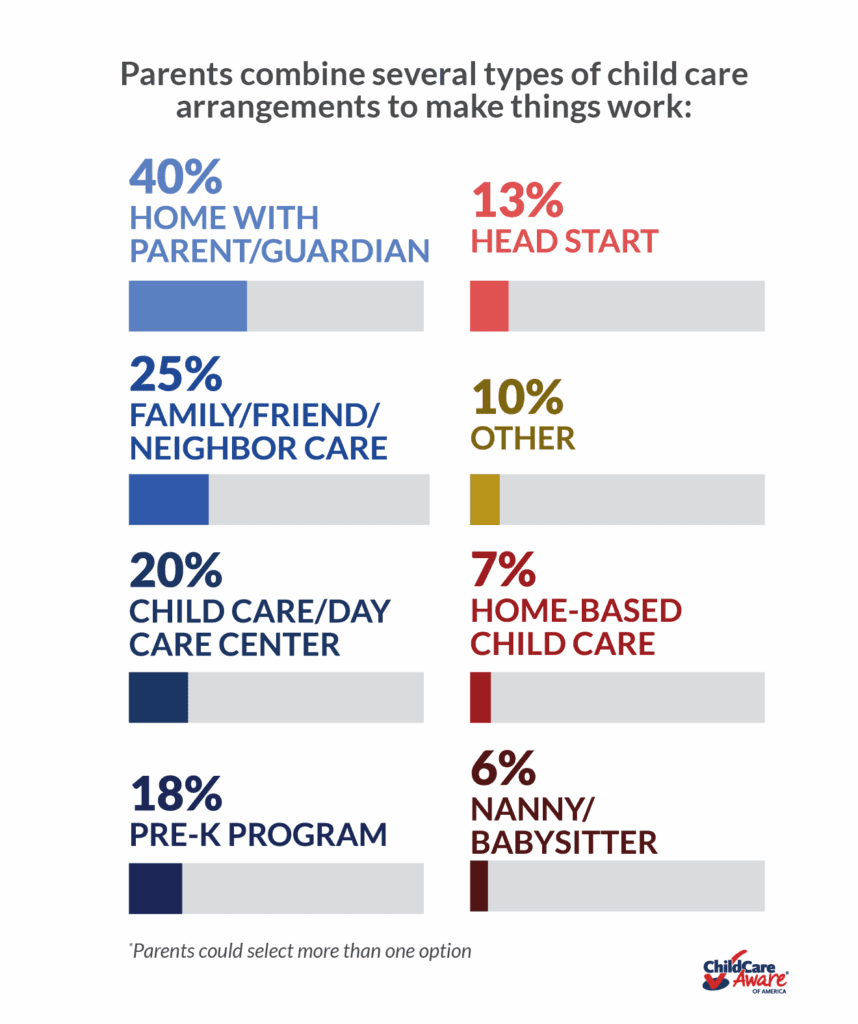
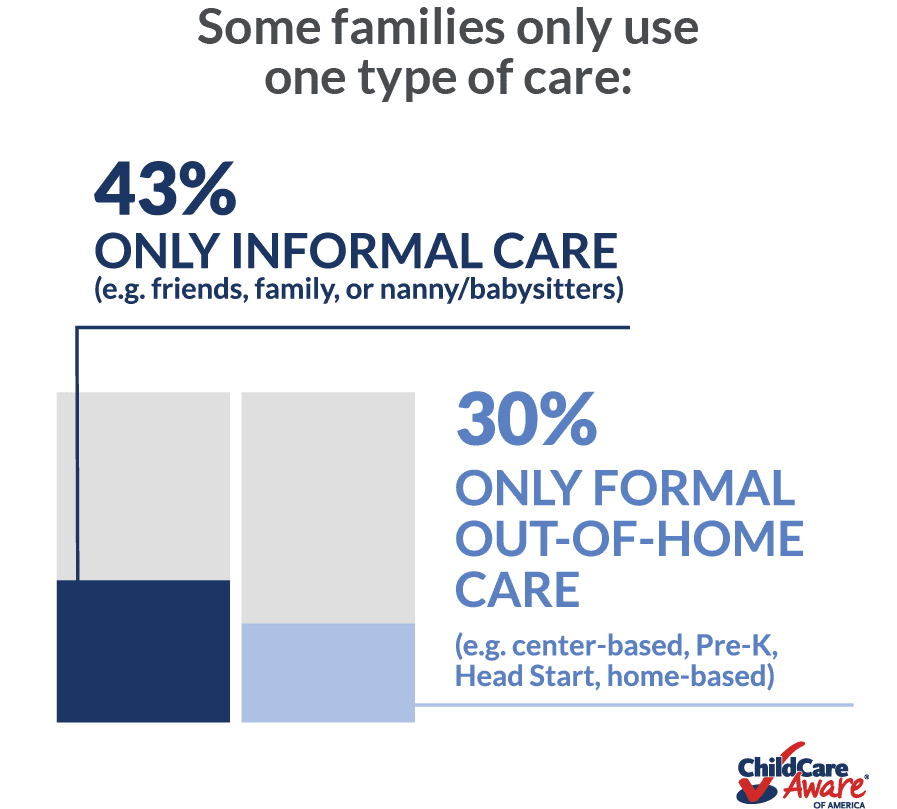
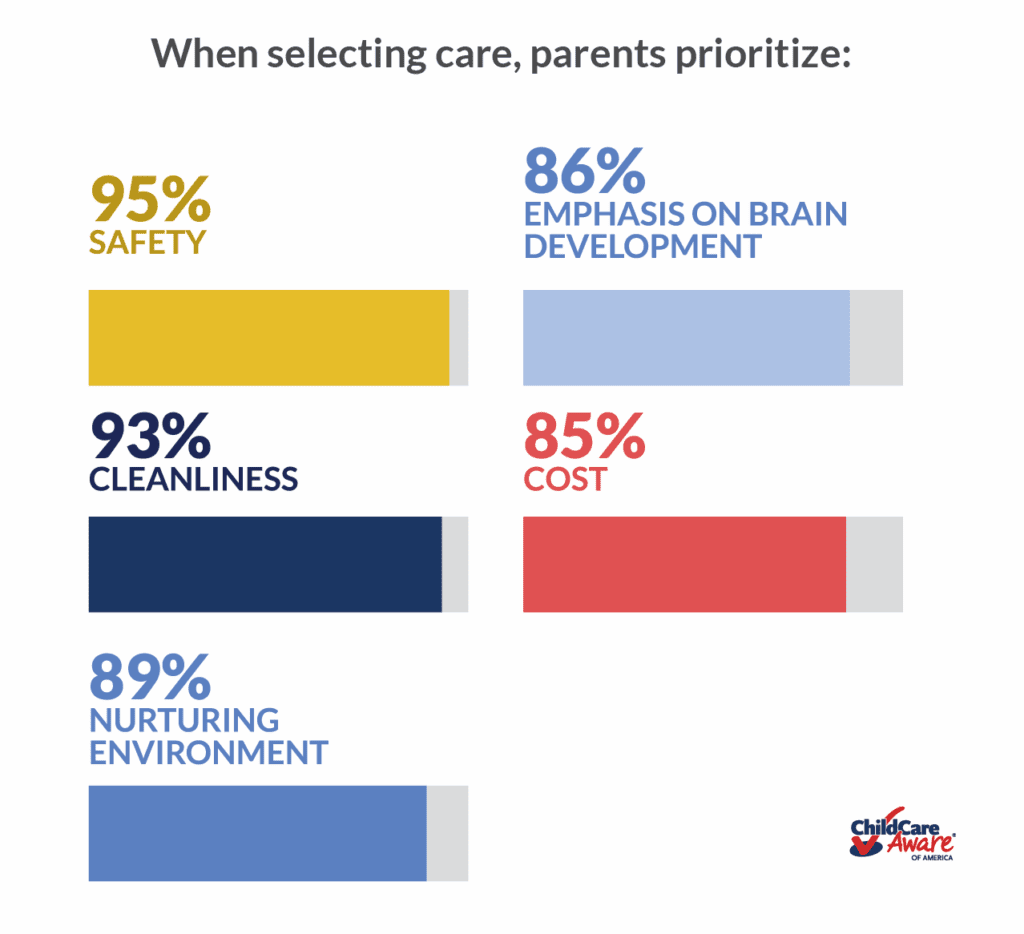
WHY IT MATTERS
Parents use different child care options and affordability and accessibility of the child care in their area may drive these choices. Additionally, parents are not simply looking for supervision. They want a safe and healthy environment that supports their children’s development through strong relationships, robust early learning, and enriching experiences.
Finding 2: Finding Quality, Affordable Child Care is a Problem for Most Parents
A majority of parents said that it is difficult to find both high-quality child care (62%) and affordable child care (70%) in their community. These concerns are especially high for mothers, stay-at-home parents, rural families, and those with lower incomes. Additionally, an overwhelming majority of parents believe that child care costs, supply, and teacher compensation are problems facing the system.
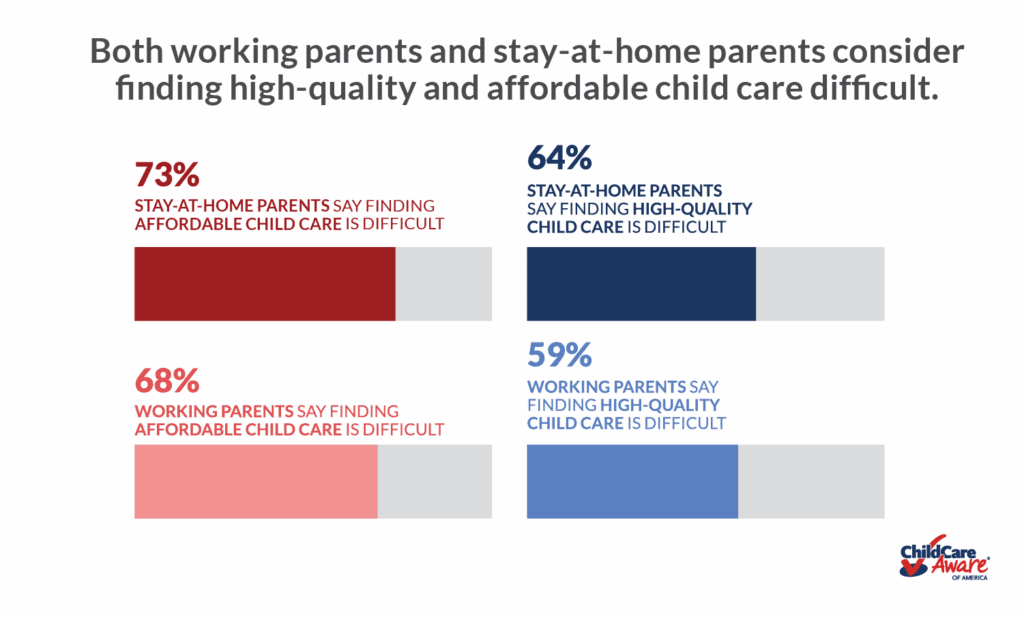
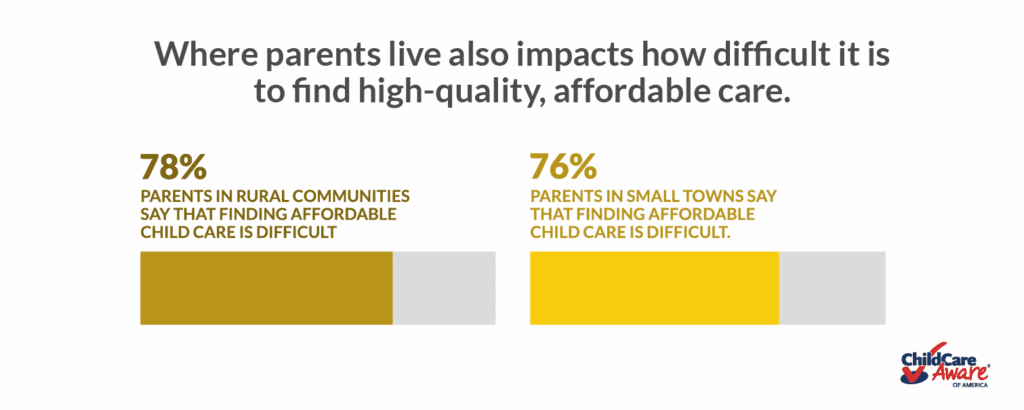
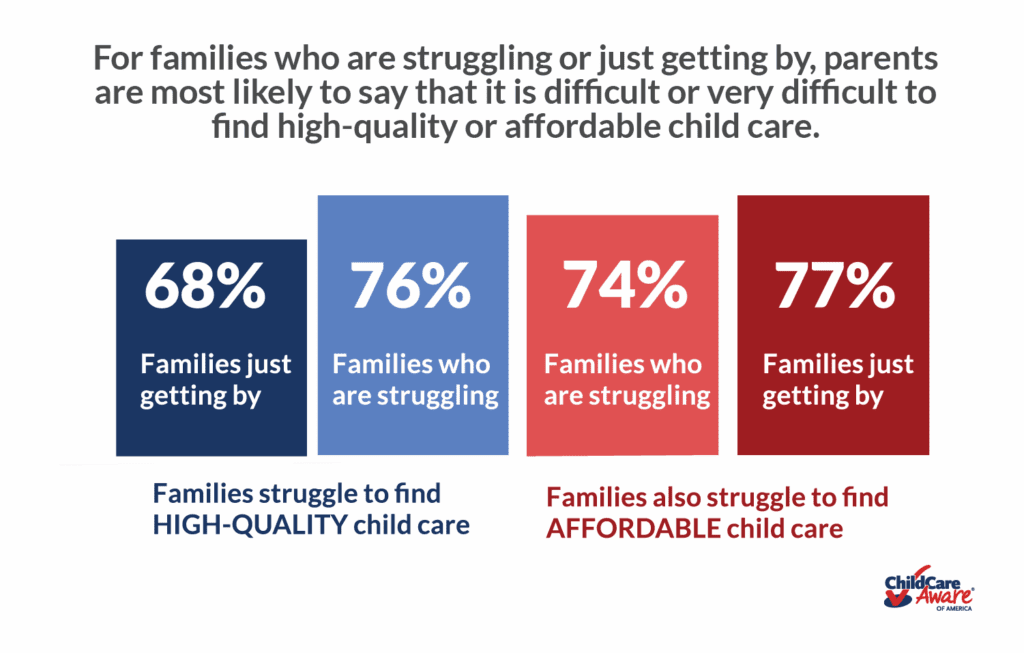
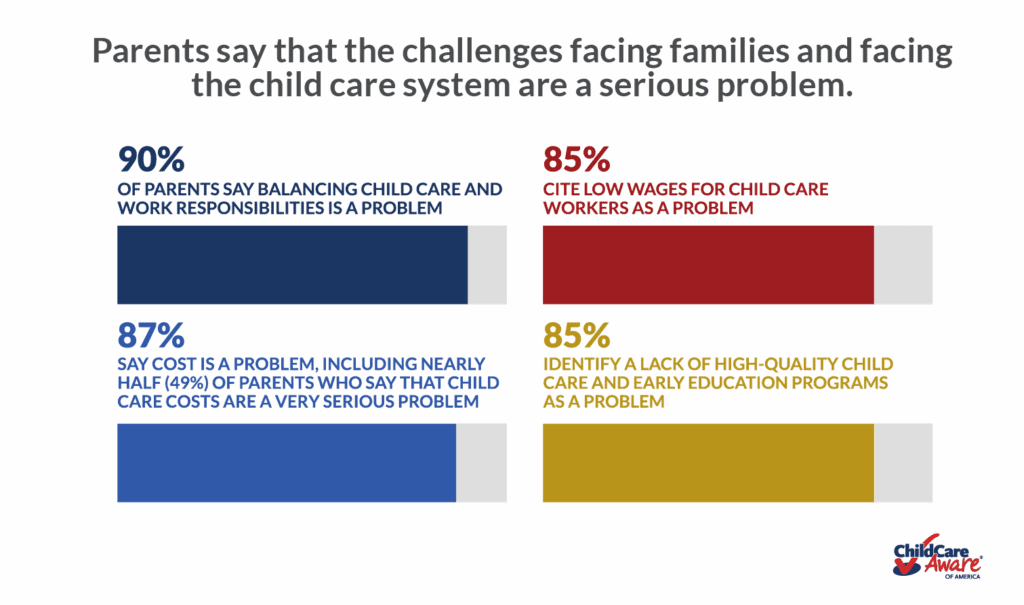
WHY IT MATTERS
Parents are squeezed on all sides. Across communities and work status, they struggle to access affordable, high-quality child care. To help parents, policymakers can relieve the pressure from the serious problems they face around finding and affording child care.
Finding 3: There is Broad, Bipartisan Support for Child Care Investment
81% of parents say that expanding access to affordable, quality child care should be a top or high priority for both federal and state policymakers. 74% of parents think funding for child care and early learning should be increased.
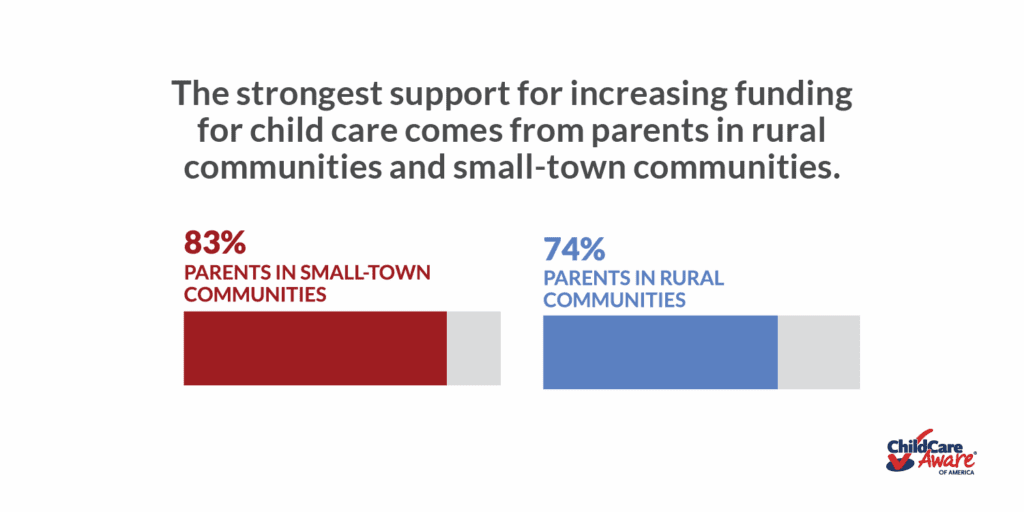
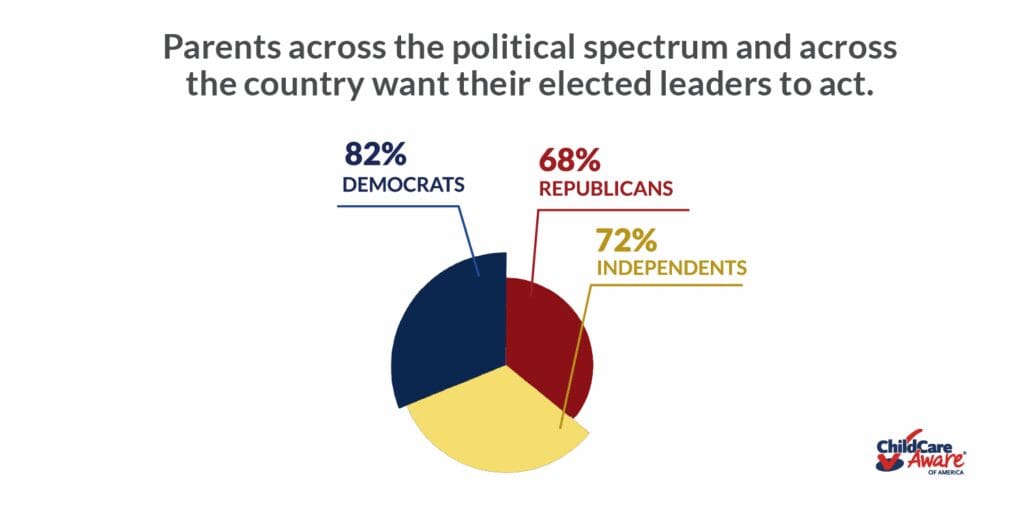
WHY IT MATTERS
Why it matters. Child care funding is not a partisan issue—it’s a parent issue. Families want their lawmakers to see child care as essential and act accordingly.
The bottom line is that parents are sending a clear message to lawmakers: investment in child care can’t wait.
Parents want lawmakers to act by increasing funding to support access to high-quality, affordable child care.
Download the full report: Parents Know the Brain Science: Parents Want Policymakers to Fund Early Learning
Finding 1: Brain Development Matters to Parents
Nearly all parents—98% for children ages 0–3 and 99% for children ages 3–5—say brain development is very or extremely important in the early years. As one parent shared, these are the years when children are “little sponges” and “excited to learn.”*
When selecting child care, parents seek settings that support learning and development. They prioritize environments that are nurturing (89%), emphasize brain development (86%), and focus on education (82%).
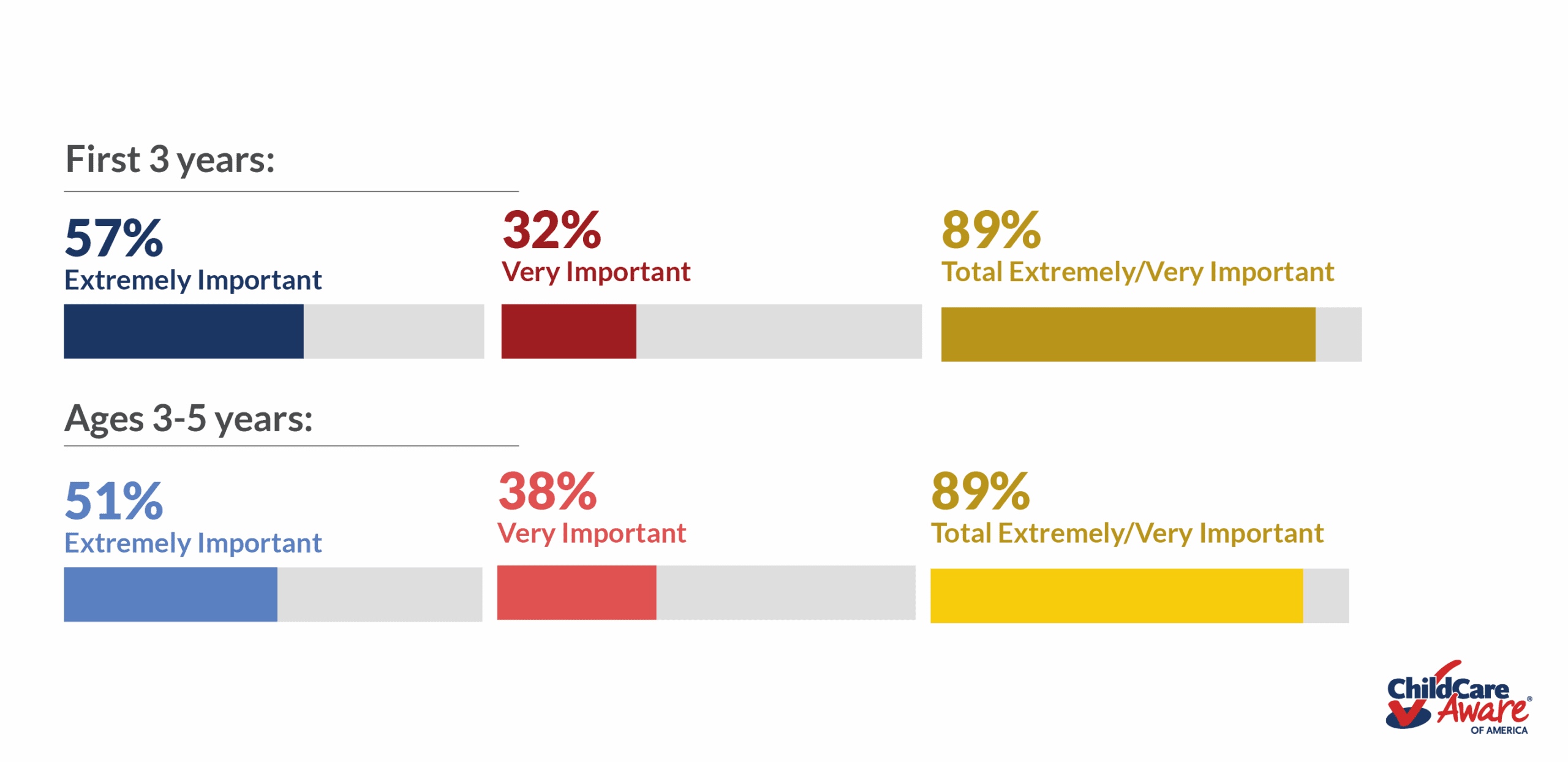
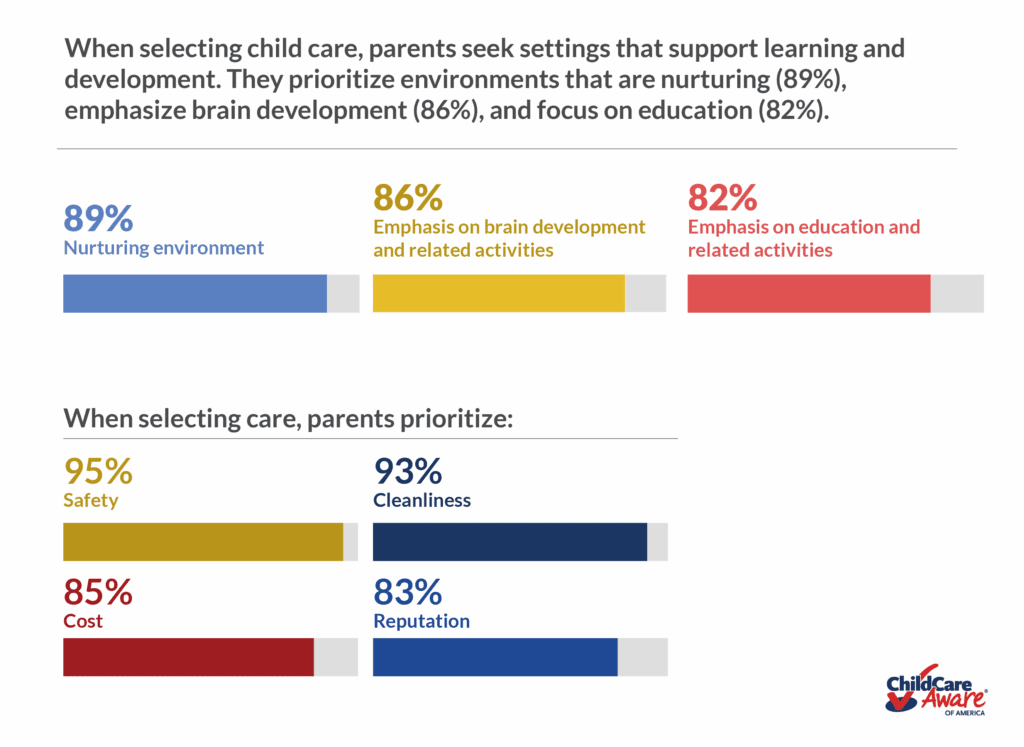
WHY IT MATTERS
Parents are both looking for a safe place for their children and they want access to high-quality early learning experiences.
From birth to age five, a child’s brain forms one million new neural connections every second and absorbs information like a sponge. That is why it is so important to have child care and early education staffed by skilled and caring professionals. It creates ideal conditions for nurturing, supporting, and enabling healthy brain development.
Parents understand that high-quality child care is a critical foundation for lifelong learning and development.
Finding 2: Parents Want Policymakers to Act
Eight in 10 (81%) parents want policymakers at the state and federal level to make access to quality child care a top priority. They look to elected leaders to enact policies that make quality child care more available and more affordable, including through funding that supports skilled educators, safe and nurturing environments, and clean and safe facilities.
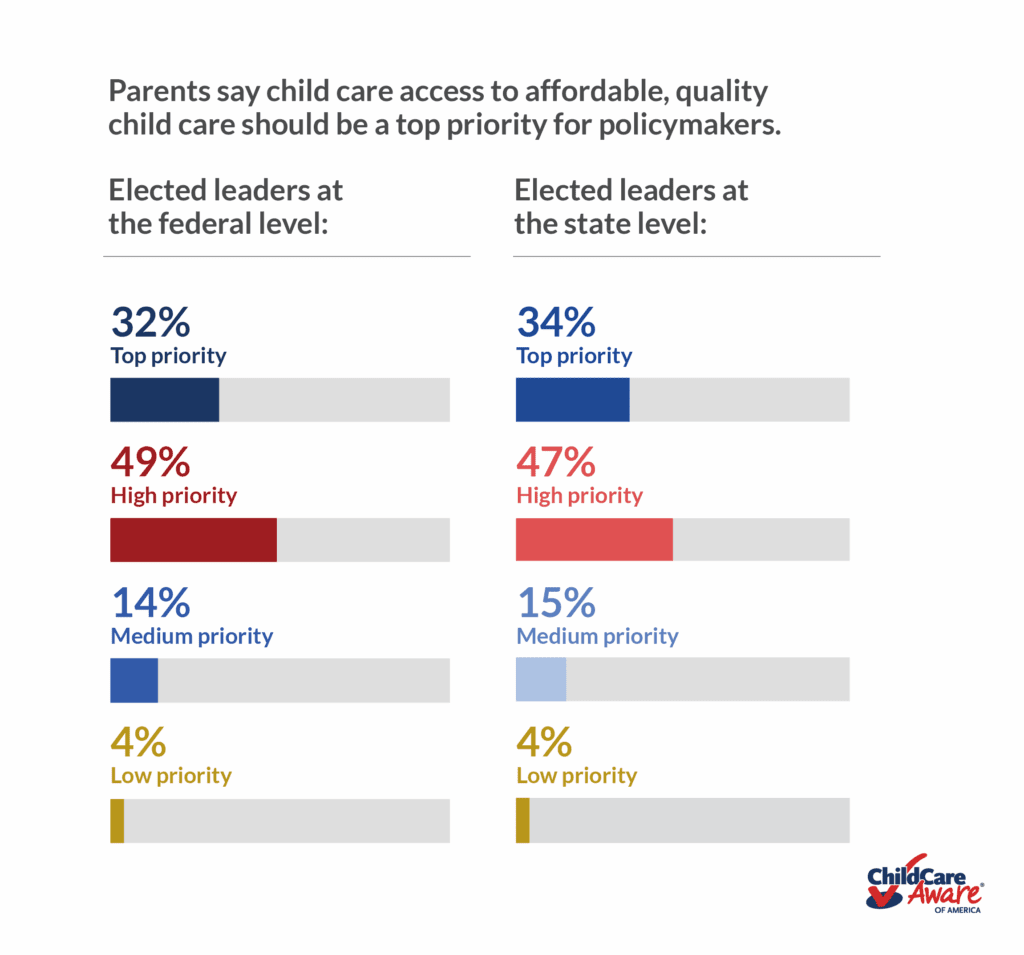
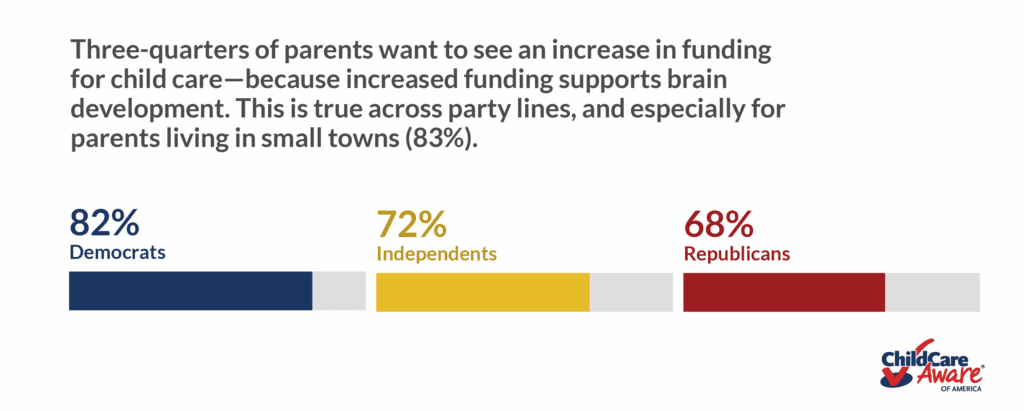
The case for investment is clear: a majority of parents (56%) say that supporting early brain development—not just boosting the economy—should be the driving reason for increasing child care funding.
In addition, regardless of political affiliation, the majority of parents believe the developmental needs of young children outweigh economic arguments when it comes to child care funding.
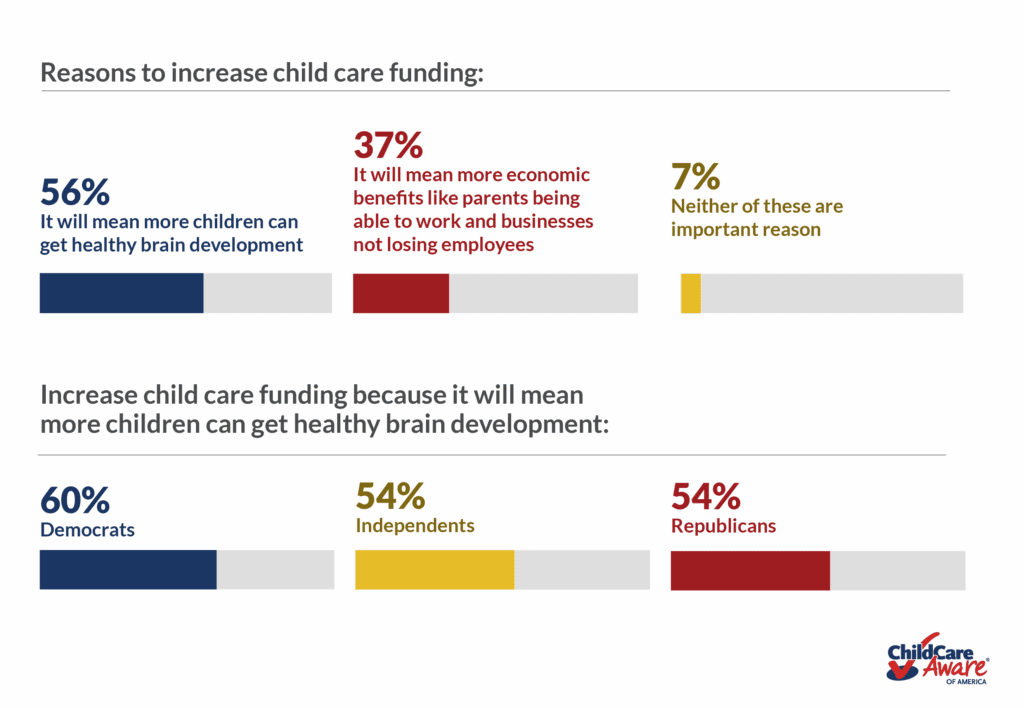
WHY IT MATTERS
Parents know that their child’s brain develops faster from birth to age six than at any later point in life, absorbing information like a sponge—and they want policymakers to act accordingly.
The bottom line is child care is more than a workforce support—it’s a developmental necessity.
Investing in child care pays off.
New Bridge Strategy and Hart Research, operating as a bipartisan research team, conducted a national online survey among 600 parents or guardians of children 18 years of age or younger who are also registered to vote.
Interviews were conducted online from March 28-April 5, 2025. They were distributed proportionally nationwide. Quotas were set for key demographic sub-groups, such as gender and age. The confidence interval (analogous to a margin of error) is +4.5 6% for the overall sample. This will vary for sub-groups.
Key Demographics:
- Gender: Male (45%), Female (55%)
- Age: 18–34 (33%), 35–44 (33%), 45–54 (24%), 55+ (10%)
- Ethnicity: White (67%), Voters of Color (33%)
- Children age 5 and under: 34%
- Party: Republicans (36%), Independents (33%), Democrats (31%)
- Education: High school or less (27%), Some college (31%), College grad (27%), Post grad (15%)





